
Ralph Emilio Peterson
@ralphpeterson.bsky.social
Neuroscientist & musician interested in sensory processing, natural neuroscience, biological/artificial collective intelligence.
Northeastern -> Harvard -> NYU -> Basis Research Institute
Northeastern -> Harvard -> NYU -> Basis Research Institute
Reposted by Ralph Emilio Peterson
Thrilled to share our new paper, out now in @natneuro.nature.com, uncovering how estradiol, the most potent estrogen, modulates reinforcement learning and reward prediction errors across biological levels. www.nature.com/articles/s41...
#blueprint 1/7
#blueprint 1/7

Estrogen modulates reward prediction errors and reinforcement learning - Nature Neuroscience
Dopamine encoding of reward prediction errors naturally fluctuates over females’ reproductive cycles with estrogenic signaling due to reduced expression of dopamine reuptake proteins.
www.nature.com
November 11, 2025 at 2:41 PM
Thrilled to share our new paper, out now in @natneuro.nature.com, uncovering how estradiol, the most potent estrogen, modulates reinforcement learning and reward prediction errors across biological levels. www.nature.com/articles/s41...
#blueprint 1/7
#blueprint 1/7
Reposted by Ralph Emilio Peterson
Super excited to share the first part of my thesis work!
Perhaps how you might be able to both recognize someone’s voice *and* understand what they’re saying, we find that both social identity and vocalization category can be decoded from gerbil auditory cortex activity👂🧠
tinyurl.com/4fba6wk4
Perhaps how you might be able to both recognize someone’s voice *and* understand what they’re saying, we find that both social identity and vocalization category can be decoded from gerbil auditory cortex activity👂🧠
tinyurl.com/4fba6wk4

October 27, 2025 at 10:03 PM
Super excited to share the first part of my thesis work!
Perhaps how you might be able to both recognize someone’s voice *and* understand what they’re saying, we find that both social identity and vocalization category can be decoded from gerbil auditory cortex activity👂🧠
tinyurl.com/4fba6wk4
Perhaps how you might be able to both recognize someone’s voice *and* understand what they’re saying, we find that both social identity and vocalization category can be decoded from gerbil auditory cortex activity👂🧠
tinyurl.com/4fba6wk4
Reposted by Ralph Emilio Peterson
Less than a week left to apply!
⭐PhD position available!⭐
Come join us @imprs-qbee.bsky.social to study communication and collective behavior in animal groups! We're looking for someone excited to use computational approaches to tackle biological questions, using our full-group tracking datasets
imprs-qbee.mpg.de/121465/analy...
Come join us @imprs-qbee.bsky.social to study communication and collective behavior in animal groups! We're looking for someone excited to use computational approaches to tackle biological questions, using our full-group tracking datasets
imprs-qbee.mpg.de/121465/analy...

Analysis of communication and collective behavior in animal groups
imprs-qbee.mpg.de
October 26, 2025 at 6:07 PM
Less than a week left to apply!
Reposted by Ralph Emilio Peterson
🧠🌟🐭 Excited to share some of my postdoc work on the evolution of dexterity!
We compared deer mice evolved in forest vs prairie habitats. We found that forest mice have:
(1) more corticospinal neurons (CSNs)
(2) better hand dexterity
(3) more dexterous climbing, which is linked to CSN number🧵
We compared deer mice evolved in forest vs prairie habitats. We found that forest mice have:
(1) more corticospinal neurons (CSNs)
(2) better hand dexterity
(3) more dexterous climbing, which is linked to CSN number🧵
October 22, 2025 at 8:41 PM
🧠🌟🐭 Excited to share some of my postdoc work on the evolution of dexterity!
We compared deer mice evolved in forest vs prairie habitats. We found that forest mice have:
(1) more corticospinal neurons (CSNs)
(2) better hand dexterity
(3) more dexterous climbing, which is linked to CSN number🧵
We compared deer mice evolved in forest vs prairie habitats. We found that forest mice have:
(1) more corticospinal neurons (CSNs)
(2) better hand dexterity
(3) more dexterous climbing, which is linked to CSN number🧵
Reposted by Ralph Emilio Peterson
⭐PhD position available!⭐
Come join us @imprs-qbee.bsky.social to study communication and collective behavior in animal groups! We're looking for someone excited to use computational approaches to tackle biological questions, using our full-group tracking datasets
imprs-qbee.mpg.de/121465/analy...
Come join us @imprs-qbee.bsky.social to study communication and collective behavior in animal groups! We're looking for someone excited to use computational approaches to tackle biological questions, using our full-group tracking datasets
imprs-qbee.mpg.de/121465/analy...

Analysis of communication and collective behavior in animal groups
imprs-qbee.mpg.de
October 3, 2025 at 7:40 AM
⭐PhD position available!⭐
Come join us @imprs-qbee.bsky.social to study communication and collective behavior in animal groups! We're looking for someone excited to use computational approaches to tackle biological questions, using our full-group tracking datasets
imprs-qbee.mpg.de/121465/analy...
Come join us @imprs-qbee.bsky.social to study communication and collective behavior in animal groups! We're looking for someone excited to use computational approaches to tackle biological questions, using our full-group tracking datasets
imprs-qbee.mpg.de/121465/analy...
Reposted by Ralph Emilio Peterson
A new preprint field study reveals that New York City’s rats aren’t just survivors—they’re talkative city dwellers with their own hidden nightlife. Mapping their movements and conversations could offer insights to transform urban planning and pest control

New York City’s Rats Have a Secret Nightlife—And a Language Humans Can’t Hear
A new preprint field study reveals that New York City’s rats aren’t just survivors—they’re talkative city dwellers with their own hidden nightlife. Mapping their movements and conversations could offe...
www.scientificamerican.com
September 15, 2025 at 12:50 PM
A new preprint field study reveals that New York City’s rats aren’t just survivors—they’re talkative city dwellers with their own hidden nightlife. Mapping their movements and conversations could offer insights to transform urban planning and pest control
🌆🐀Scientific American article about the project we're starting on NYC rats!! scientificamerican.com/article/scie...
w/ Emily Mackevicius, Dima Batenkov, @zamakany.bsky.social, @basisresearch.bsky.social
Seeking collaborators and funders 🐀🌆
w/ Emily Mackevicius, Dima Batenkov, @zamakany.bsky.social, @basisresearch.bsky.social
Seeking collaborators and funders 🐀🌆

New York City’s Rats Have a Secret Nightlife—And a Language Humans Can’t Hear
A new preprint field study reveals that New York City’s rats aren’t just survivors—they’re talkative city dwellers with their own hidden nightlife. Mapping their movements and conversations could offe...
scientificamerican.com
September 15, 2025 at 12:33 PM
🌆🐀Scientific American article about the project we're starting on NYC rats!! scientificamerican.com/article/scie...
w/ Emily Mackevicius, Dima Batenkov, @zamakany.bsky.social, @basisresearch.bsky.social
Seeking collaborators and funders 🐀🌆
w/ Emily Mackevicius, Dima Batenkov, @zamakany.bsky.social, @basisresearch.bsky.social
Seeking collaborators and funders 🐀🌆
Reposted by Ralph Emilio Peterson
New paper on precise tool use learning in carrion crows @currentbiology.bsky.social. We show that—like New Caledonian crows—expert carrion crows pay close attention to the working end of their tool, suggesting tool integration into their peripersonal space. 🧵 & vids! 👇
www.cell.com/current-biol...
www.cell.com/current-biol...

September 11, 2025 at 10:15 AM
New paper on precise tool use learning in carrion crows @currentbiology.bsky.social. We show that—like New Caledonian crows—expert carrion crows pay close attention to the working end of their tool, suggesting tool integration into their peripersonal space. 🧵 & vids! 👇
www.cell.com/current-biol...
www.cell.com/current-biol...
Reposted by Ralph Emilio Peterson
Can't wait to read this preprint from Misha Ahrens and team. Calcium imaging in larval zebrafish, in every cell in the body! Amazing.
www.biorxiv.org/content/10.1...
www.biorxiv.org/content/10.1...

August 22, 2025 at 10:21 PM
Can't wait to read this preprint from Misha Ahrens and team. Calcium imaging in larval zebrafish, in every cell in the body! Amazing.
www.biorxiv.org/content/10.1...
www.biorxiv.org/content/10.1...
Reposted by Ralph Emilio Peterson
What do neuroscience labs and the streets of New York City have in common? They are both commonly home to rats, a feature this research team is leveraging to study rat social cognition in the wild.
By @martajhill.bsky.social
#neuroskyence
www.thetransmitter.org/social-cogni...
By @martajhill.bsky.social
#neuroskyence
www.thetransmitter.org/social-cogni...
August 19, 2025 at 2:23 PM
What do neuroscience labs and the streets of New York City have in common? They are both commonly home to rats, a feature this research team is leveraging to study rat social cognition in the wild.
By @martajhill.bsky.social
#neuroskyence
www.thetransmitter.org/social-cogni...
By @martajhill.bsky.social
#neuroskyence
www.thetransmitter.org/social-cogni...
Reposted by Ralph Emilio Peterson
The lab is growing! Our team is seeking talented scientists to study flexible sensory processing. We design freely-moving and head-fixed acoustic behaviors alongside acute and wireless neural recordings. PD and grad roles available
Please help spread the word 🙏🧠🎵🐭
neurojobs.sfn.org/job/38911/po...
Please help spread the word 🙏🧠🎵🐭
neurojobs.sfn.org/job/38911/po...
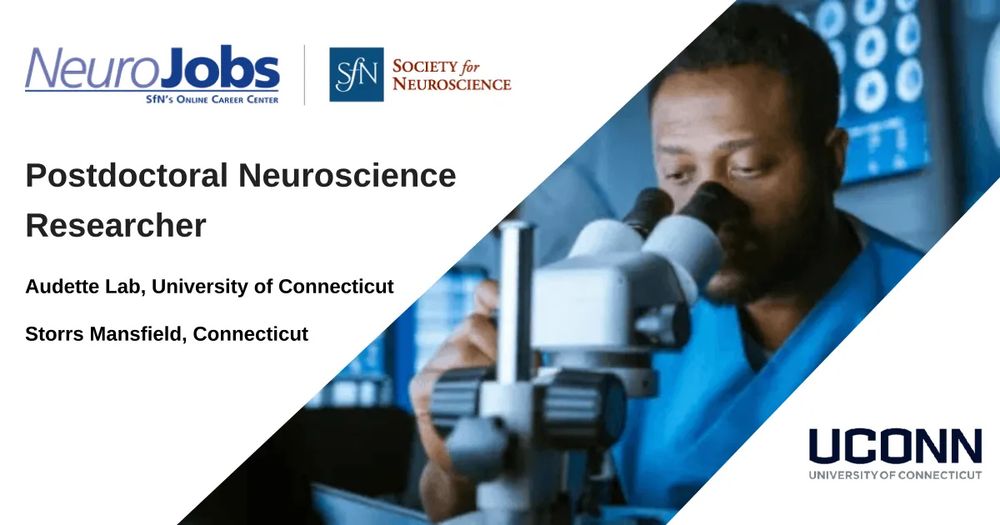
Postdoctoral Neuroscience Researcher - Storrs Mansfield, Connecticut job with Audette Lab, University of Connecticut | 38911
Fully funded postdoctoral research position studying context-dependent sensory processing in the mouse motor and auditory thalamus and cortex.
neurojobs.sfn.org
August 1, 2025 at 7:15 PM
The lab is growing! Our team is seeking talented scientists to study flexible sensory processing. We design freely-moving and head-fixed acoustic behaviors alongside acute and wireless neural recordings. PD and grad roles available
Please help spread the word 🙏🧠🎵🐭
neurojobs.sfn.org/job/38911/po...
Please help spread the word 🙏🧠🎵🐭
neurojobs.sfn.org/job/38911/po...
New preprint!
tl;dr — We ran around late at night to record wild rats in NYC and figured out how to quantify their behavior and environment. 🧵
w/ Dima Batenkov, @zamakany.bsky.social, Emily Mackevicius
www.biorxiv.org/content/10.1...
tl;dr — We ran around late at night to record wild rats in NYC and figured out how to quantify their behavior and environment. 🧵
w/ Dima Batenkov, @zamakany.bsky.social, Emily Mackevicius
www.biorxiv.org/content/10.1...
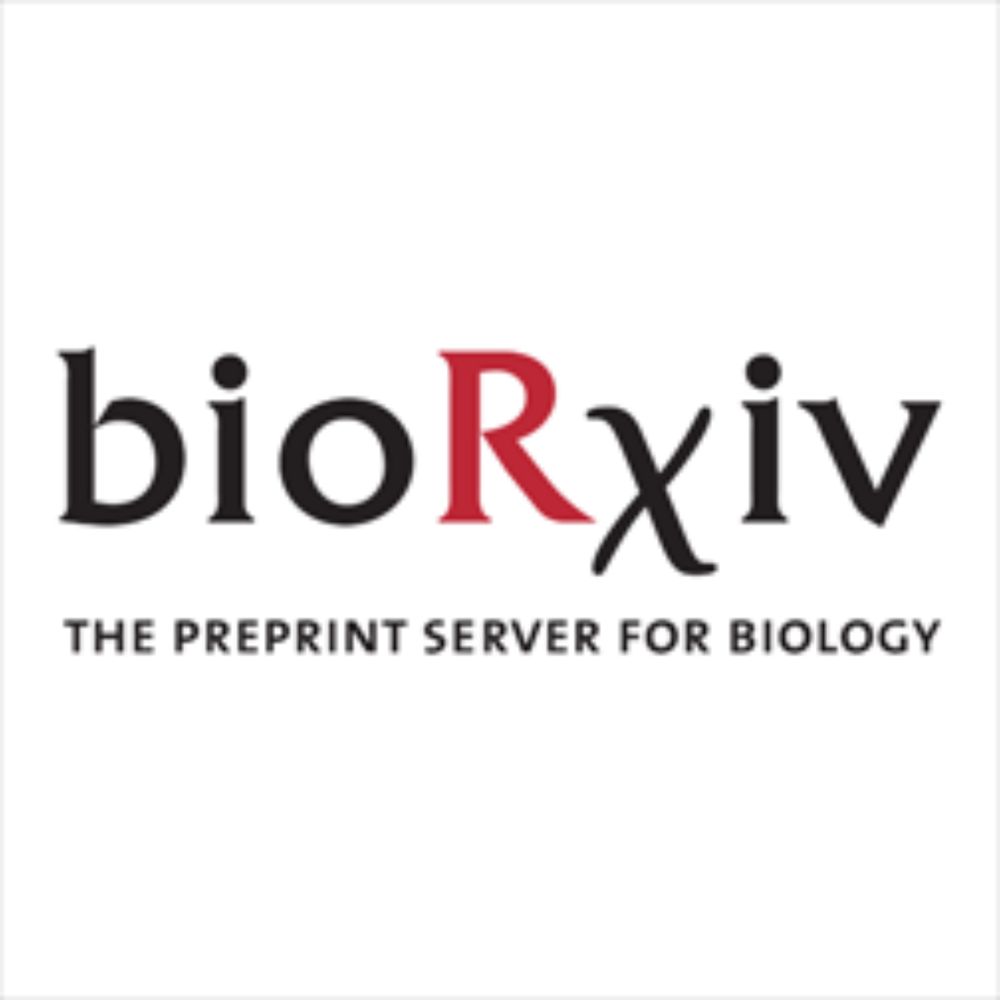
Computational Urban Ecology of New York City Rats
Urban rats are highly adaptable, thriving in the dynamic and often inhospitable conditions of modern cities. Despite substantial mitigation efforts, they remain an enduring presence in urban environme...
www.biorxiv.org
July 25, 2025 at 3:57 PM
New preprint!
tl;dr — We ran around late at night to record wild rats in NYC and figured out how to quantify their behavior and environment. 🧵
w/ Dima Batenkov, @zamakany.bsky.social, Emily Mackevicius
www.biorxiv.org/content/10.1...
tl;dr — We ran around late at night to record wild rats in NYC and figured out how to quantify their behavior and environment. 🧵
w/ Dima Batenkov, @zamakany.bsky.social, Emily Mackevicius
www.biorxiv.org/content/10.1...
Reposted by Ralph Emilio Peterson
Ok, reinforcement learning fans: RL is great, but what do we do when there's no obvious reward from the environment? What about perfecting a golf swing or a foxtrot or a musical performance? We may have an answer. A tale of 🐦 🎶 + 🧠. 🧵1/ #bioacoustics #prattle 💬 #neuroai #compneuro
I am happy to share our new preprint! In this work, we proposed a theory about how zebra finches bootstrap their error signals for self-guided RL via predictive coding 👇 www.biorxiv.org/content/10.1...

Correctness is its own reward: bootstrapping error signals in self-guided reinforcement learning
Reinforcement learning (RL) offers a compelling account of how agents learn complex behaviors by trial and error, yet RL is predicated on the existence of a reward function provided by the agent's env...
www.biorxiv.org
July 24, 2025 at 2:29 PM
Ok, reinforcement learning fans: RL is great, but what do we do when there's no obvious reward from the environment? What about perfecting a golf swing or a foxtrot or a musical performance? We may have an answer. A tale of 🐦 🎶 + 🧠. 🧵1/ #bioacoustics #prattle 💬 #neuroai #compneuro
Reposted by Ralph Emilio Peterson
🚨Very happy that my PhD work is now out in @nature.com!
We discovered that evolution, by acting in the midbrain, shifted the threshold to escape in Peromyscus mice, to fine-tune defensive strategies in different environments
www.nature.com/articles/s41...
This was a truly collaborative effort! 🧵⬇️
We discovered that evolution, by acting in the midbrain, shifted the threshold to escape in Peromyscus mice, to fine-tune defensive strategies in different environments
www.nature.com/articles/s41...
This was a truly collaborative effort! 🧵⬇️
July 23, 2025 at 3:06 PM
🚨Very happy that my PhD work is now out in @nature.com!
We discovered that evolution, by acting in the midbrain, shifted the threshold to escape in Peromyscus mice, to fine-tune defensive strategies in different environments
www.nature.com/articles/s41...
This was a truly collaborative effort! 🧵⬇️
We discovered that evolution, by acting in the midbrain, shifted the threshold to escape in Peromyscus mice, to fine-tune defensive strategies in different environments
www.nature.com/articles/s41...
This was a truly collaborative effort! 🧵⬇️
Reposted by Ralph Emilio Peterson
Thrilled to see our TinyRNN paper in @nature! We show how tiny RNNs predict choices of individual subjects accurately while staying fully interpretable. This approach can transform how we model cognitive processes in both healthy and disordered decisions. doi.org/10.1038/s415...
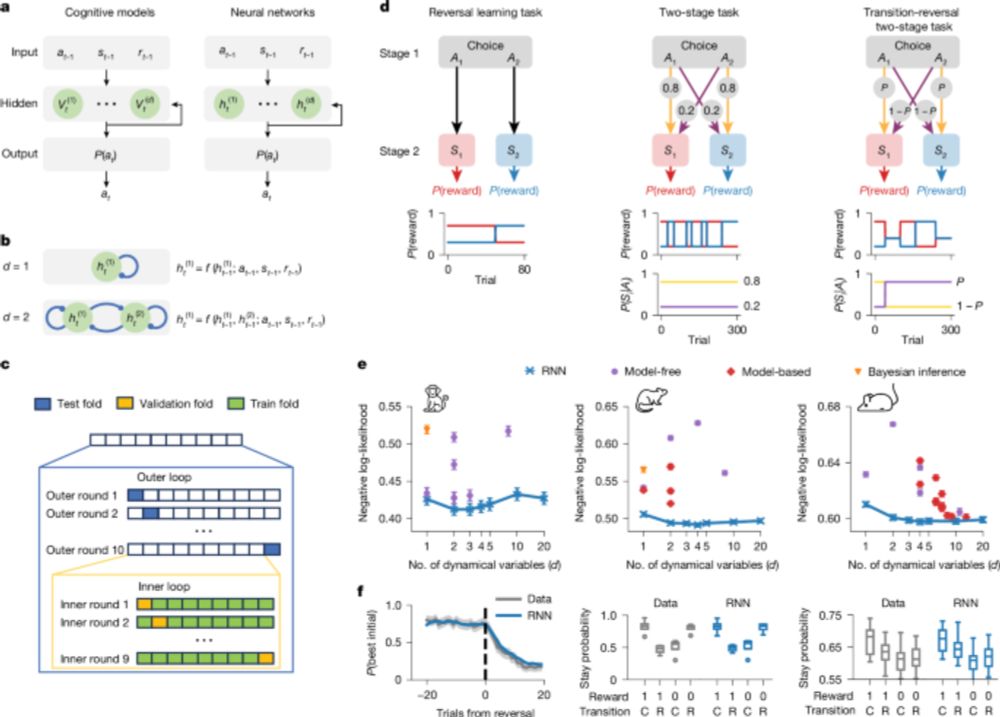
Discovering cognitive strategies with tiny recurrent neural networks - Nature
Modelling biological decision-making with tiny recurrent neural networks enables more accurate predictions of animal choices than classical cognitive models and offers insights into the underlying cog...
doi.org
July 2, 2025 at 7:03 PM
Thrilled to see our TinyRNN paper in @nature! We show how tiny RNNs predict choices of individual subjects accurately while staying fully interpretable. This approach can transform how we model cognitive processes in both healthy and disordered decisions. doi.org/10.1038/s415...
Reposted by Ralph Emilio Peterson
In many brain areas, neuronal tuning is heterogeneous. But how does this diversity help behavior? We show how tuning diversity shapes representational geometry and boosts coding efficiency for perception in our new preprint: www.biorxiv.org/content/10.1...
(w/ @sueyeonchung.bsky.social&Tony Movshon)
(w/ @sueyeonchung.bsky.social&Tony Movshon)

Variations in neuronal selectivity create efficient representational geometries for perception
Our visual capabilities depend on neural response properties in visual areas of our brains. Neurons exhibit a wide variety of selective response properties, but the reasons for this diversity are unkn...
www.biorxiv.org
June 29, 2025 at 12:19 AM
In many brain areas, neuronal tuning is heterogeneous. But how does this diversity help behavior? We show how tuning diversity shapes representational geometry and boosts coding efficiency for perception in our new preprint: www.biorxiv.org/content/10.1...
(w/ @sueyeonchung.bsky.social&Tony Movshon)
(w/ @sueyeonchung.bsky.social&Tony Movshon)
cheap speaker playback system for field experiments!
A little behind-the-scenes story from our wild mouse study below
tldr: We DIY'd a cheap ultrasonic speaker for an experiment. A rude polecat ruined the experiment. We hope the speaker might still be useful for others!
Parts and protocol here: bit.ly/3TDl8ND
#bioacoustics #neuroskyence
1/11
tldr: We DIY'd a cheap ultrasonic speaker for an experiment. A rude polecat ruined the experiment. We hope the speaker might still be useful for others!
Parts and protocol here: bit.ly/3TDl8ND
#bioacoustics #neuroskyence
1/11
Very happy to share the latest from my postdoc!
10 yrs of mouse social networks + 1.25 yrs of acoustic data ➡️ insight into vocalization & sociality in a wild population of your favorite lab model 🐁
paper: bit.ly/4n93yyD
data: bit.ly/4lfFBEk
code: bit.ly/4kNnMwx
#bioacoustics #neuroskyence
1/8
10 yrs of mouse social networks + 1.25 yrs of acoustic data ➡️ insight into vocalization & sociality in a wild population of your favorite lab model 🐁
paper: bit.ly/4n93yyD
data: bit.ly/4lfFBEk
code: bit.ly/4kNnMwx
#bioacoustics #neuroskyence
1/8
June 20, 2025 at 9:04 PM
cheap speaker playback system for field experiments!
Reposted by Ralph Emilio Peterson
Very happy to share the latest from my postdoc!
10 yrs of mouse social networks + 1.25 yrs of acoustic data ➡️ insight into vocalization & sociality in a wild population of your favorite lab model 🐁
paper: bit.ly/4n93yyD
data: bit.ly/4lfFBEk
code: bit.ly/4kNnMwx
#bioacoustics #neuroskyence
1/8
10 yrs of mouse social networks + 1.25 yrs of acoustic data ➡️ insight into vocalization & sociality in a wild population of your favorite lab model 🐁
paper: bit.ly/4n93yyD
data: bit.ly/4lfFBEk
code: bit.ly/4kNnMwx
#bioacoustics #neuroskyence
1/8

June 18, 2025 at 6:26 PM
Very happy to share the latest from my postdoc!
10 yrs of mouse social networks + 1.25 yrs of acoustic data ➡️ insight into vocalization & sociality in a wild population of your favorite lab model 🐁
paper: bit.ly/4n93yyD
data: bit.ly/4lfFBEk
code: bit.ly/4kNnMwx
#bioacoustics #neuroskyence
1/8
10 yrs of mouse social networks + 1.25 yrs of acoustic data ➡️ insight into vocalization & sociality in a wild population of your favorite lab model 🐁
paper: bit.ly/4n93yyD
data: bit.ly/4lfFBEk
code: bit.ly/4kNnMwx
#bioacoustics #neuroskyence
1/8
Reposted by Ralph Emilio Peterson
My latest Aronov lab paper is now published @Nature!
When a chickadee looks at a distant location, the same place cells activate as if it were actually there 👁️
The hippocampus encodes where the bird is looking, AND what it expects to see next -- enabling spatial reasoning from afar
bit.ly/3HvWSum
When a chickadee looks at a distant location, the same place cells activate as if it were actually there 👁️
The hippocampus encodes where the bird is looking, AND what it expects to see next -- enabling spatial reasoning from afar
bit.ly/3HvWSum
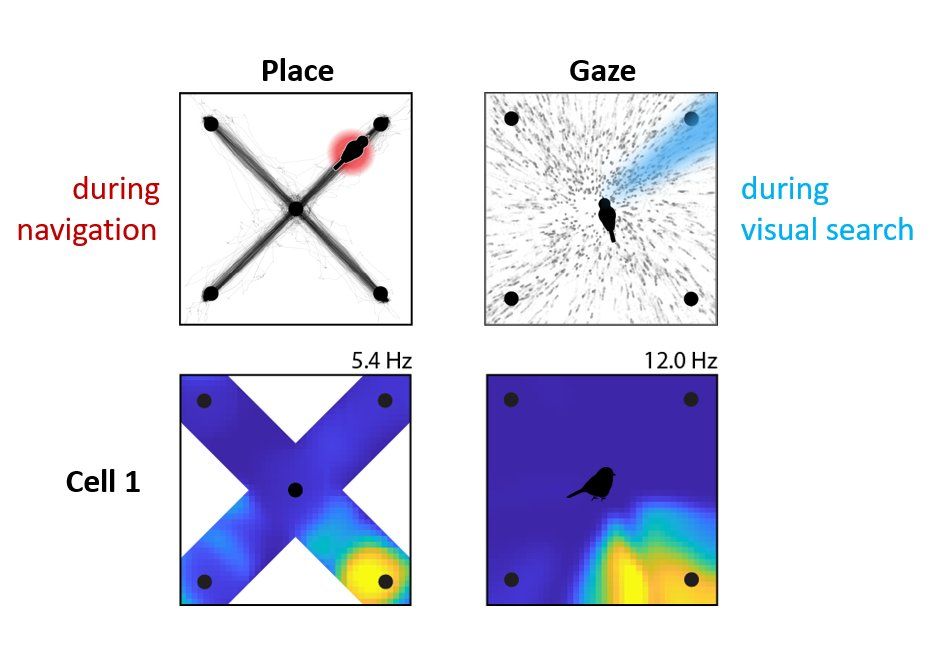
June 11, 2025 at 10:24 PM
My latest Aronov lab paper is now published @Nature!
When a chickadee looks at a distant location, the same place cells activate as if it were actually there 👁️
The hippocampus encodes where the bird is looking, AND what it expects to see next -- enabling spatial reasoning from afar
bit.ly/3HvWSum
When a chickadee looks at a distant location, the same place cells activate as if it were actually there 👁️
The hippocampus encodes where the bird is looking, AND what it expects to see next -- enabling spatial reasoning from afar
bit.ly/3HvWSum
Reposted by Ralph Emilio Peterson
David Hocker’s paper about compositional pretraining for RNNs that efficiently produces animal-like behaviors! Modeling cognitive tasks in RNNs requires thinking about latent abilities that animals bring to an experiment. Funded by NIH/CRCNS. www.nature.com/articles/s42...

Compositional pretraining improves computational efficiency and matches animal behaviour on complex tasks - Nature Machine Intelligence
Hocker et al. demonstrate a method for training recurrent neural networks, which they call ‘kindergarten curriculum learning’, involving pretraining on simple cognitive tasks to improve learning effic...
www.nature.com
May 21, 2025 at 5:59 PM
David Hocker’s paper about compositional pretraining for RNNs that efficiently produces animal-like behaviors! Modeling cognitive tasks in RNNs requires thinking about latent abilities that animals bring to an experiment. Funded by NIH/CRCNS. www.nature.com/articles/s42...
I’m a Dr now! (And new dad 😊). Thanks to all my mentors, colleagues, friends, and family past and present.




May 9, 2025 at 1:06 PM
I’m a Dr now! (And new dad 😊). Thanks to all my mentors, colleagues, friends, and family past and present.
Reposted by Ralph Emilio Peterson
🦇👂🧠Our first bat paper is out! 🧠👂🦇
How do bats tell navigation from social calls?
Led by the fearless Dr. Jenni Lawlor, we used 2P imaging to show that the auditory midbrain encodes categorical primitives.
Check it out @natneuro.nature.com: rdcu.be/ehEgz
How do bats tell navigation from social calls?
Led by the fearless Dr. Jenni Lawlor, we used 2P imaging to show that the auditory midbrain encodes categorical primitives.
Check it out @natneuro.nature.com: rdcu.be/ehEgz
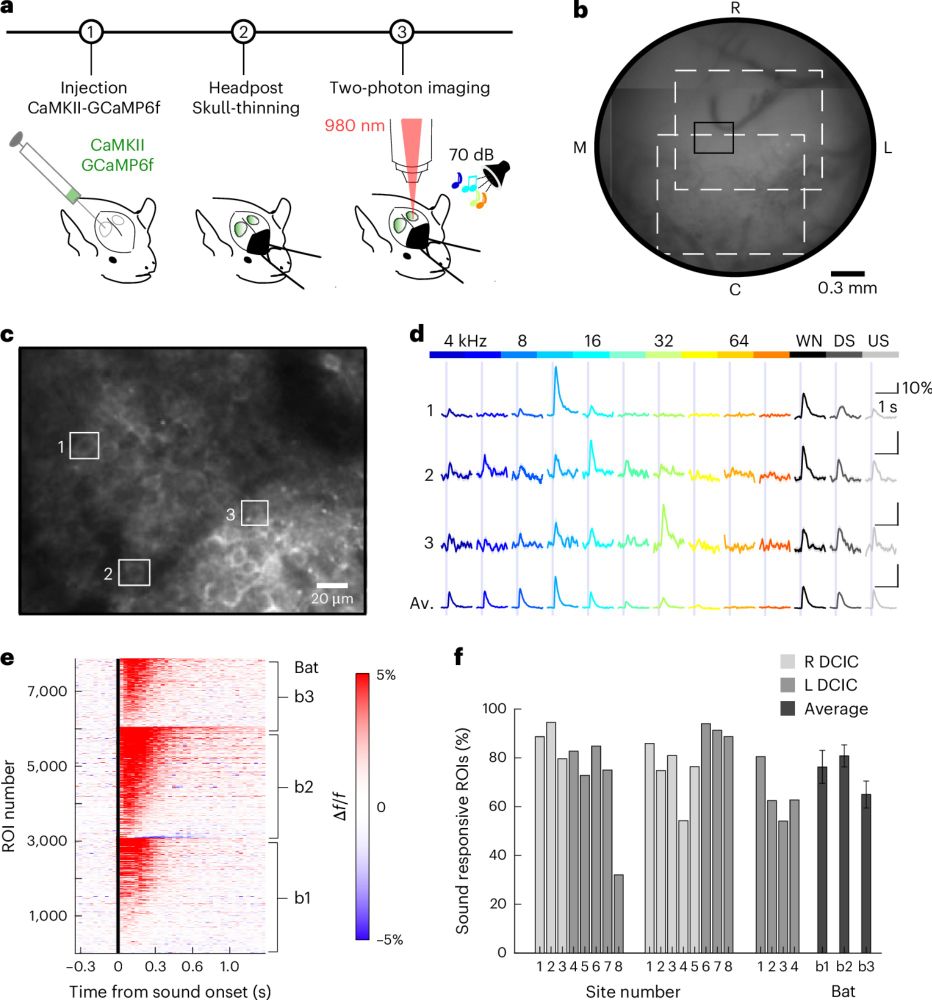
Spatially clustered neurons in the bat midbrain encode vocalization categories
Nature Neuroscience - Using two-photon imaging in awake bats, the authors show that the inferior colliculus encodes vocalization categories as categorical primitives—spatially clustered,...
rdcu.be
April 14, 2025 at 12:20 PM
🦇👂🧠Our first bat paper is out! 🧠👂🦇
How do bats tell navigation from social calls?
Led by the fearless Dr. Jenni Lawlor, we used 2P imaging to show that the auditory midbrain encodes categorical primitives.
Check it out @natneuro.nature.com: rdcu.be/ehEgz
How do bats tell navigation from social calls?
Led by the fearless Dr. Jenni Lawlor, we used 2P imaging to show that the auditory midbrain encodes categorical primitives.
Check it out @natneuro.nature.com: rdcu.be/ehEgz
Reposted by Ralph Emilio Peterson
I highly recommend this inspiring new book by Nahum Ulanovsky! A plea for neuroscientists to embrace “Natural Neuroscience”: use emerging technologies to uncover meaningful behavior and neural representations in free-roaming animals exposed to real-world stimuli.
mitpress.mit.edu/978026204499...
mitpress.mit.edu/978026204499...
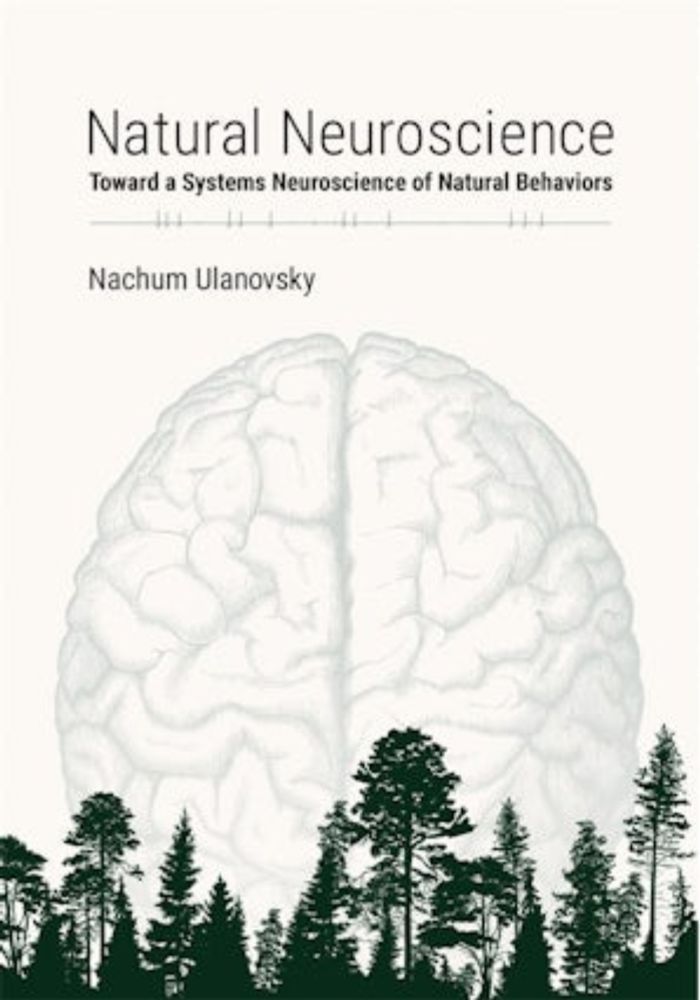
Natural Neuroscience
Natural neuroscience departs from the classical reductionist approach, which emphasizes control at the expense of natural behaviors, by proposing a shift tow...
mitpress.mit.edu
April 15, 2025 at 10:28 AM
I highly recommend this inspiring new book by Nahum Ulanovsky! A plea for neuroscientists to embrace “Natural Neuroscience”: use emerging technologies to uncover meaningful behavior and neural representations in free-roaming animals exposed to real-world stimuli.
mitpress.mit.edu/978026204499...
mitpress.mit.edu/978026204499...
would love to embed some existing *ultrasonic* audio recordings into some pre-trained ANN feature space — anyone know of any *ultrasonic* networks out there? cc @animal-prattle.bsky.social @earthspecies.bsky.social @timsainburg.bsky.social @nicholdav.bsky.social @nickjourjine.bsky.social
April 9, 2025 at 1:10 AM
would love to embed some existing *ultrasonic* audio recordings into some pre-trained ANN feature space — anyone know of any *ultrasonic* networks out there? cc @animal-prattle.bsky.social @earthspecies.bsky.social @timsainburg.bsky.social @nicholdav.bsky.social @nickjourjine.bsky.social
Reposted by Ralph Emilio Peterson
Our first look at midbrain PAG’s role in singing mouse vocal control. When near each other, these mice produce two divergent vocal modes. Same circuits for USVs and Songs—or different ones? Bets were made..some of us bought beers for others! Led by @xmikezheng20.bsky.social & Clifford Harpole. 👇🏽
Important new work from @xmikezheng20.bsky.social @arkarupbanerjee.bsky.social et al
bit.ly/42dWcQN
ethology+modeling+targeted neural manipulation —> new textbook example of how evolutionary tinkering can generate multiple behavioral modes with a single neural circuit
#bioacoustics
#prattle 💬
bit.ly/42dWcQN
ethology+modeling+targeted neural manipulation —> new textbook example of how evolutionary tinkering can generate multiple behavioral modes with a single neural circuit
#bioacoustics
#prattle 💬

Parametric Modulation of a Shared Midbrain Circuit Drives Distinct Vocal Modes in a Singing Mouse
Neural circuits capable of generating multiple outputs are essential for behavioral flexibility, yet their organizational principles remain poorly understood. Using vocal communication in singing mice...
bit.ly
April 6, 2025 at 2:08 AM
Our first look at midbrain PAG’s role in singing mouse vocal control. When near each other, these mice produce two divergent vocal modes. Same circuits for USVs and Songs—or different ones? Bets were made..some of us bought beers for others! Led by @xmikezheng20.bsky.social & Clifford Harpole. 👇🏽

